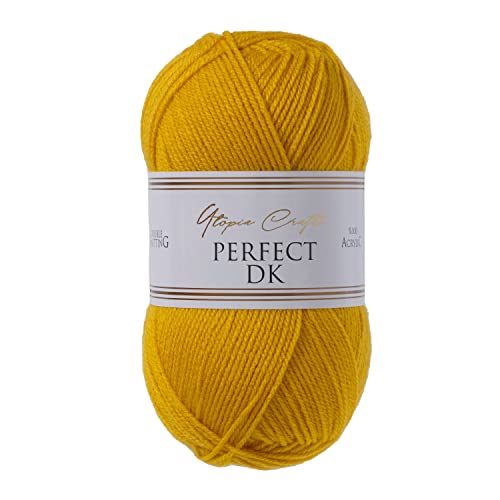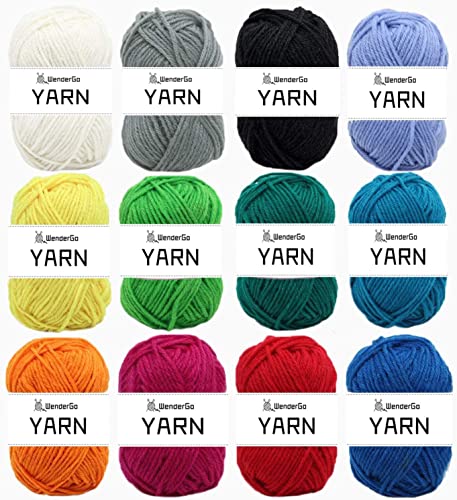Yes, you can dye your own yarn at home!
If you’re a fan of knitting or crocheting, you may have wondered if it’s possible to dye your own yarn at home. The good news is that not only is it possible, but it’s also a fun and creative way to personalize your projects. Whether you want to experiment with different colors or create unique variegated yarn, dyeing your own yarn allows you to unleash your creativity and add a personal touch to your crafting.
What do you need to get started?
To dye your own yarn at home, you’ll need a few basic supplies. Here’s a list of what you’ll need:
- Undyed yarn: Choose a high-quality, natural fiber yarn such as wool or cotton. These fibers are more receptive to dyes and will yield better results.
- Dye: There are several different types of dyes available, including acid dyes, fiber-reactive dyes, and natural dyes. Choose a dye that is suitable for the type of fiber you’re working with.
- Fixative: A fixative or mordant is used to help the dye bond to the fibers and increase colorfastness. Common fixatives include vinegar, citric acid, or alum.
- Large pot: You’ll need a pot large enough to hold your yarn and allow it to move freely during the dyeing process.
- Heat source: You’ll need a heat source to simmer the yarn and set the dye. This can be a stovetop burner or a dedicated dyeing pot.
- Measuring cups and spoons: Accurate measurement of dye and fixative is essential for achieving consistent results.
- Mixing bowls or containers: You’ll need containers to mix your dye solutions in.
- Utensils: Use dedicated utensils for dyeing to avoid cross-contamination. This includes spoons, tongs, or chopsticks for stirring the dye.
- Protective gear: Protect your hands and clothing by wearing gloves and an apron while dyeing.
How to dye your own yarn at home
Now that you have your supplies ready, here’s a step-by-step guide to dyeing your own yarn at home:
- Prepare your yarn: If your yarn is in hank form, you’ll need to wind it into skeins or pre-soak it to ensure even dye penetration.
- Prepare your dye solutions: Follow the instructions provided with your chosen dye to prepare the dye solutions. This may involve dissolving the dye in hot water or mixing it with a fixative.
- Prep your workspace: Lay down plastic sheeting or old towels to protect your work surface from any dye spills or splashes.
- Immerse your yarn: Place your prepared yarn into the dye bath, making sure it’s fully submerged. Use tongs or chopsticks to gently move the yarn around and ensure even dye distribution.
- Heat and simmer: Set your pot on the heat source and slowly bring it to a simmer. Maintain a gentle simmer for the recommended dyeing time, usually around 30 minutes to an hour.
- Cool and rinse: Carefully remove the yarn from the dye bath and allow it to cool. Once cooled, rinse the yarn under running water until the water runs clear. This will help remove any excess dye.
- Dry and enjoy: Hang your dyed yarn to dry in a well-ventilated area, away from direct sunlight. Once dry, your yarn is ready to be transformed into beautiful handmade creations.
Tips and tricks for successful yarn dyeing
Here are a few tips to help you achieve the best results when dyeing your own yarn at home:
- Experiment with different dyeing techniques: From solid colors to variegated and speckled effects, there are countless techniques to explore. Try dip-dyeing, hand-painting, or even tie-dye for unique and stunning results.
- Keep a record of your dyeing experiments: Jot down the dye formulas, techniques, and results in a notebook. This will help you replicate your favorite colorways and avoid any dyeing mishaps in the future.
- Practice color theory: Understanding color theory can help you create harmonious color combinations. Experiment with mixing primary colors to create secondary and tertiary colors.
- Experiment with different fibers: While natural fibers are most commonly used for dyeing, don’t be afraid to try dyeing synthetic or blended fibers. Just make sure to use dyes that are suitable for the specific fiber content.
- Start small and gradually scale up: If you’re new to yarn dyeing, start with a small amount of yarn to practice your techniques and get a feel for the process. As you gain confidence, you can increase your batch sizes.
Dyeing your own yarn at home is not only possible but also a rewarding and enjoyable creative endeavor. With just a few supplies and some basic knowledge, you can create unique and personalized yarns that will make your knitting or crocheting projects truly one-of-a-kind. So why not give it a try and let your creativity soar?






